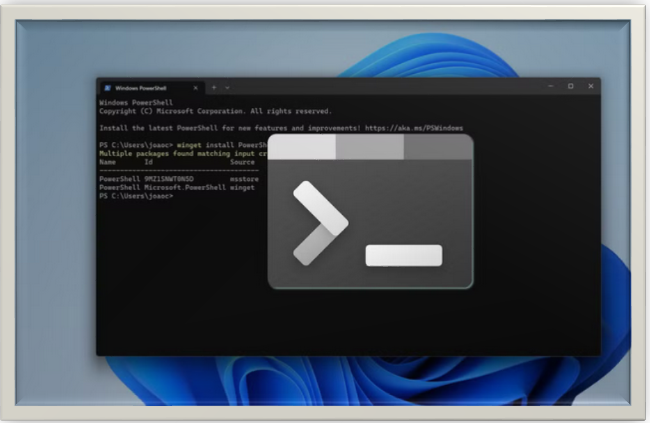HOW TO USE AN ANDROID TABLET AS A SECOND MONITOR: A BEGINNER’S GUIDE
Learn how to use your Android tablet as a second monitor to extend your PC or laptop display. Boost productivity with this easy setup for dual screens.

INTRODUCTION:
Are you looking for an additional screen space without the expense of a second monitor? You're in luck if you own an Android tablet! It's simple to use as your Mac or PC's secondary monitor. Your tablet can be a useful tool if you need more space for multitasking, a dedicated screen for entertainment, or a better workspace. You can use your tablet to mirror or extend your desktop screen so that you can view content from your computer on the tablet screen.
We'll walk you through the simple process of turning your Android tablet into a second monitor in this easy-to-follow guide.
Advantages of Using an Android Tablet as a Secondary Monitor
There are numerous advantages to using your tablet as a secondary monitor:
-
Increased Productivity: You may concentrate on activities on one screen while keeping emails, communication apps, or reference materials open on another.
-
Cost-effective: Rather than buying a new display, use a device you currently own to save money.
-
Easy to Move: Tablets provide you with a variety of workspace possibilities because they are lightweight and easily repositionable.
How to set up your Android tablet as a secondary monitor.
1. Using Third-Party Apps
Using third-party apps is the easiest way to use your Android tablet as a second monitor. Here are the top two choices that are also the easiest to use:
Option 1: Spacedesk ( free)
Spacedesk is a well-known, free application that enables you to connect your Android tablet wirelessly to your computer, allowing it to function as an additional display.
How to set it up:
-
Download the Spacedesk App on Your Tablet :
-
Open the “Google Play Store” and search for “Spacedesk”.
-
Install the app on your Android tablet.
-
-
Install Spacedesk on Your Computer:
-
Navigate to the official Spacedesk website at spacedesk.net and download the “Spacedesk Driver Software” designed for Windows.
-
Proceed to install the software on your computer.
- Connect Your Tablet to Your Computer:
-
Ensure that both your tablet and computer are linked to the same Wi-Fi network.
-
Open your tablet's Spacedesk application.
-
The application ought to locate your machine on its own. To make the connection, just tap on the name of your computer.
-
You can now use your Android tablet as a secondary monitor
- Change Display Preferences:
-
On your computer, select “Display settings” by doing a right-click on the desktop.
-
You can rearrange your displays, choose the screen's elongation, and change the resolution settings here.
Option 2: Duet Display (Paid)
Duet Display is another excellent application that provides a seamless experience, though it requires a one-time fee. It’s especially beneficial for Mac users but is also compatible with Windows.
How to set it up:
- Download Duet Display on your Tablet:
- Open the “Google Play Store”, search for “Duet Display”, and install the software on your Android tablet.
- Get Duet Display for Mac or PC:
-
Download the Mac or PC software from the “Duet Display” website at duetdisplay.com.
-
To finish the installation, adhere to the given instructions.
- Connect your tablet:
-
Mac users might need to utilize a USB cable, but Windows users can connect wirelessly.
-
Launch the Duet Display application on your Android tablet and PC.
Your tablet will be able to function as a second monitor after the connection is established.
- Modify Your Display:
- You may adjust the extra monitor's functionality by accessing your display settings, just like with Spacedesk.
2. Using Wireless Display or Built-in Casting (Windows Only)
In case you are not comfortable with installing third-party apps, Windows 10 and 11 can project your computer's screen onto an Android tablet. But bear in mind that employing specialized programs like Spacedesk or Duet Display may make use of this built-in capability more seamless.
How to Project the Screen of Your Computer on a Tablet:
- Set Up Your Computer for Wireless Display:
-
Navigate to “Settings” >, select “System”> “Projecting to this PC” on your computer.
-
Choose “Globally accessible” from the initial drop-down option.
- Project Your Screen:
-
Go to “Settings”> “Connected devices” > “Cast” on your Android tablet.
-
Select your PC from the device list that is displayed.
- Change the Display Preferences:
From your PC's “Display settings”, you can rearrange your displays and change settings, just like with third-party apps.
3. Wired Option: USB-C to HDMI Cable
You can use a “USB-C to HDMI” cable to provide a more reliable connection, although this is a less frequent alternative as most Android tablets do not have HDMI input. While not compatible with many devices and requiring particular hardware, this approach is nevertheless worthwhile to consider if you're searching for a connected option.
Procedure for the Wired Approach:
-
Acquire adapter: Get a USB Type-C to HDMI adapter from a reliable electronics vendor.
-
Connect the Adapter: Place one end of the adapter into the USB Type-C connector on your tablet and the other end into the HDMI port on your computer.
-
Modify the Configuration:Navigate to the display settings on your PC and set your tablet as a secondary monitor. The tablet screen's resolution, orientation, and placement may all be adjusted to meet your needs.
The Greatest Ways to Use Your Tablet as a Second Monitor
To ensure peak performance, bear the following in mind:
-
Check Compatibility: Ensure that the connection method you plan to use is supported by both your computer and tablet. For confirmation, see their specs.
-
Modify Display Settings: Set the resolution of your tablet to match the primary display on your computer for the optimal visual experience.
-
Preserve Battery Life: To prevent depleting the battery when using your tablet as a secondary monitor for an extended period, connect it to a power source.
-
Find Extra Features: A lot of wireless display adapters have extra features like rotating, expanding, and mirroring the screen. Try these features to personalize your configuration.
-
Verify Network Connection: Make sure your PC and tablet are linked to the same Wi-Fi network for a flawless wireless experience.
-
Monitor power Status: Always have a charger close by because using your tablet as a second monitor will quickly drain its power.
-
Take a Stand: Using a tablet stand can improve ergonomics and viewing comfort, which can improve your second monitor experience.
CONCLUSION:
Using your Android tablet as a second monitor is a simple and affordable method to improve your workstation. The setup process is simple and quick, regardless of whether you want to use Windows' built-in casting capabilities, a paid program like Duet Display, or a free one like Spacedesk. Your productivity can soar with an extra screen, enabling you to work more efficiently or enjoy movies on a larger monitor.
With the help of this article, you can easily turn your Android tablet into a second monitor so you can fully utilize an expanded display configuration.
Thanks for reading.
If you like the article, consider sharing and subscribing. ;)




